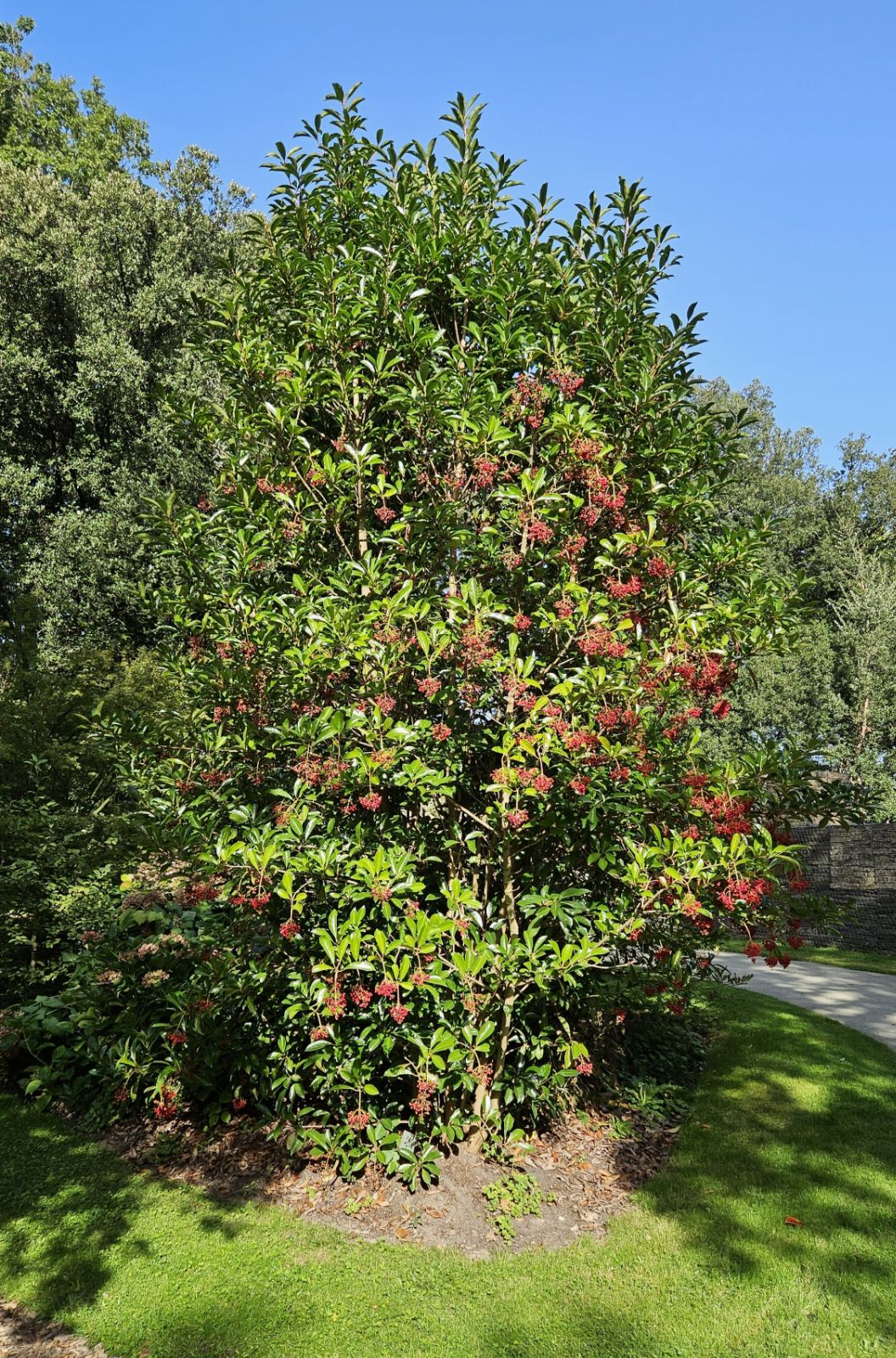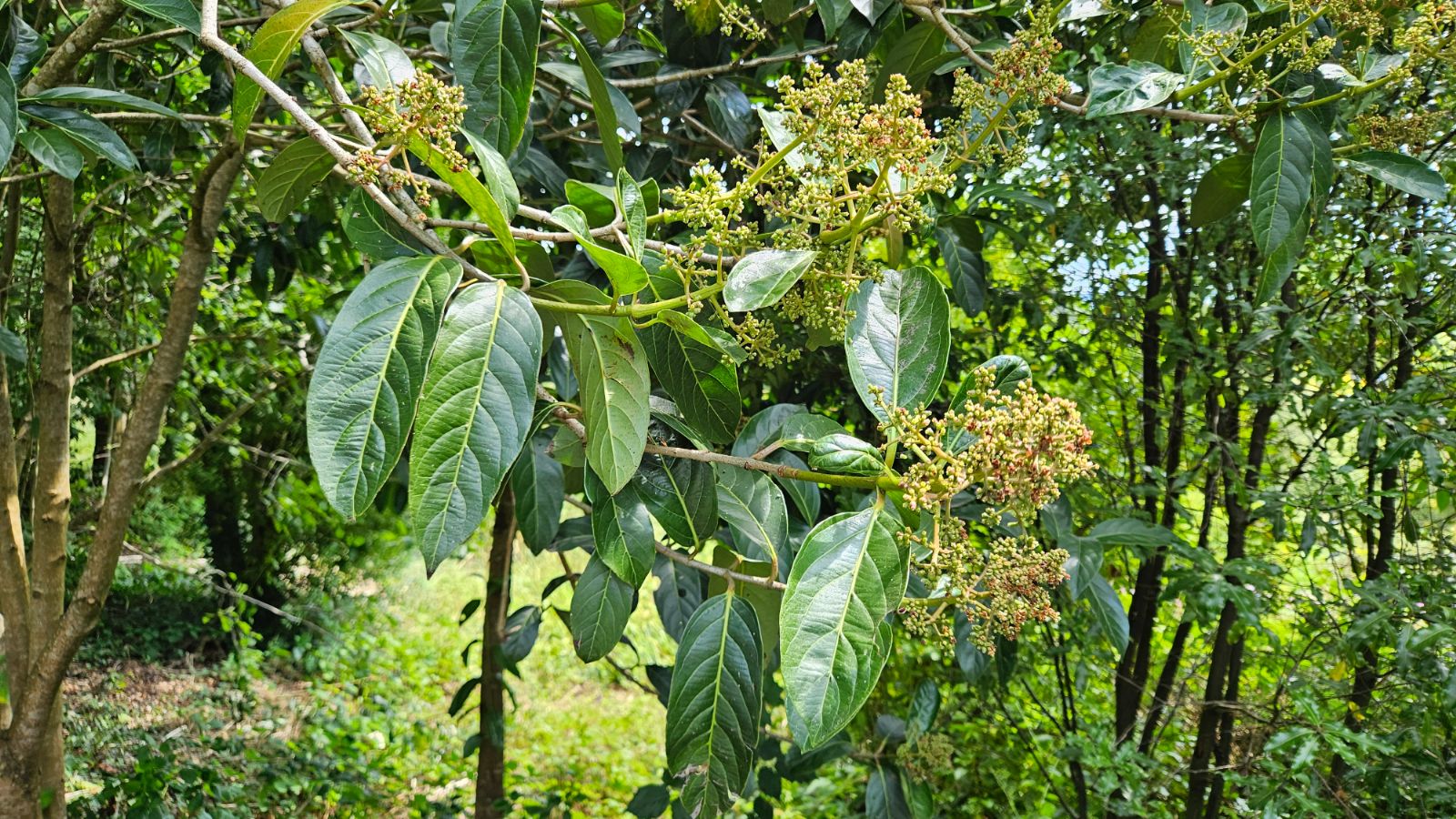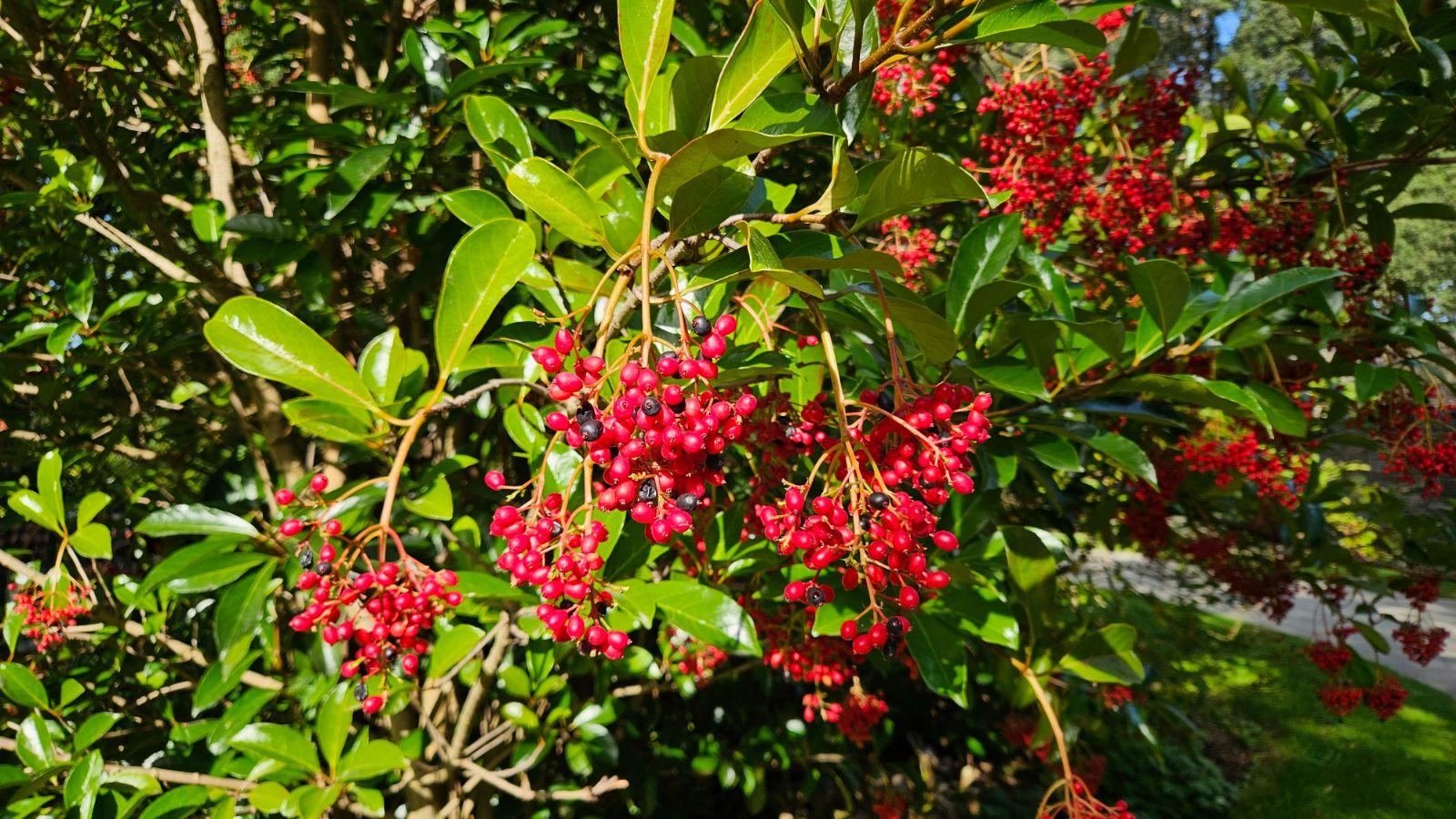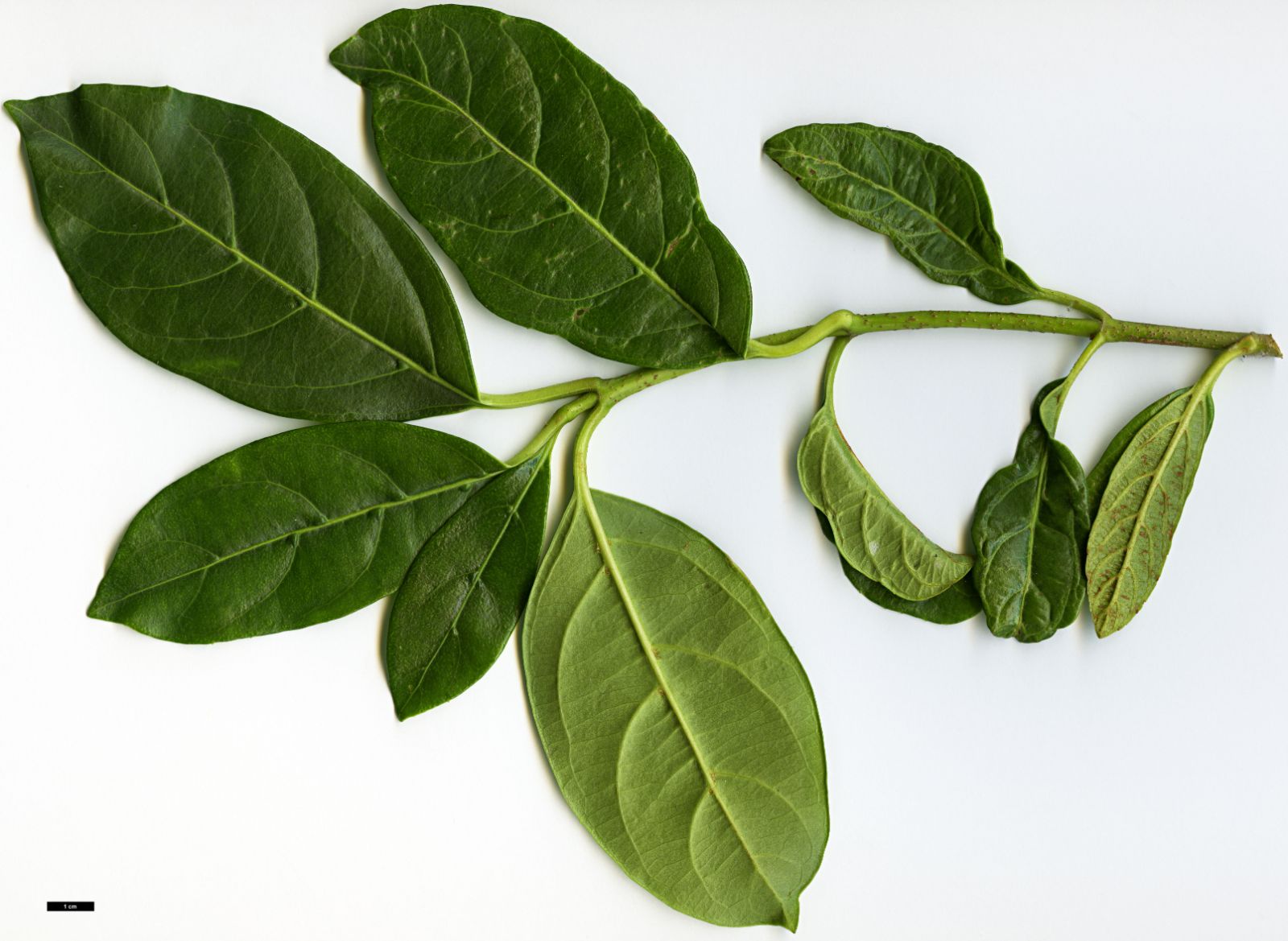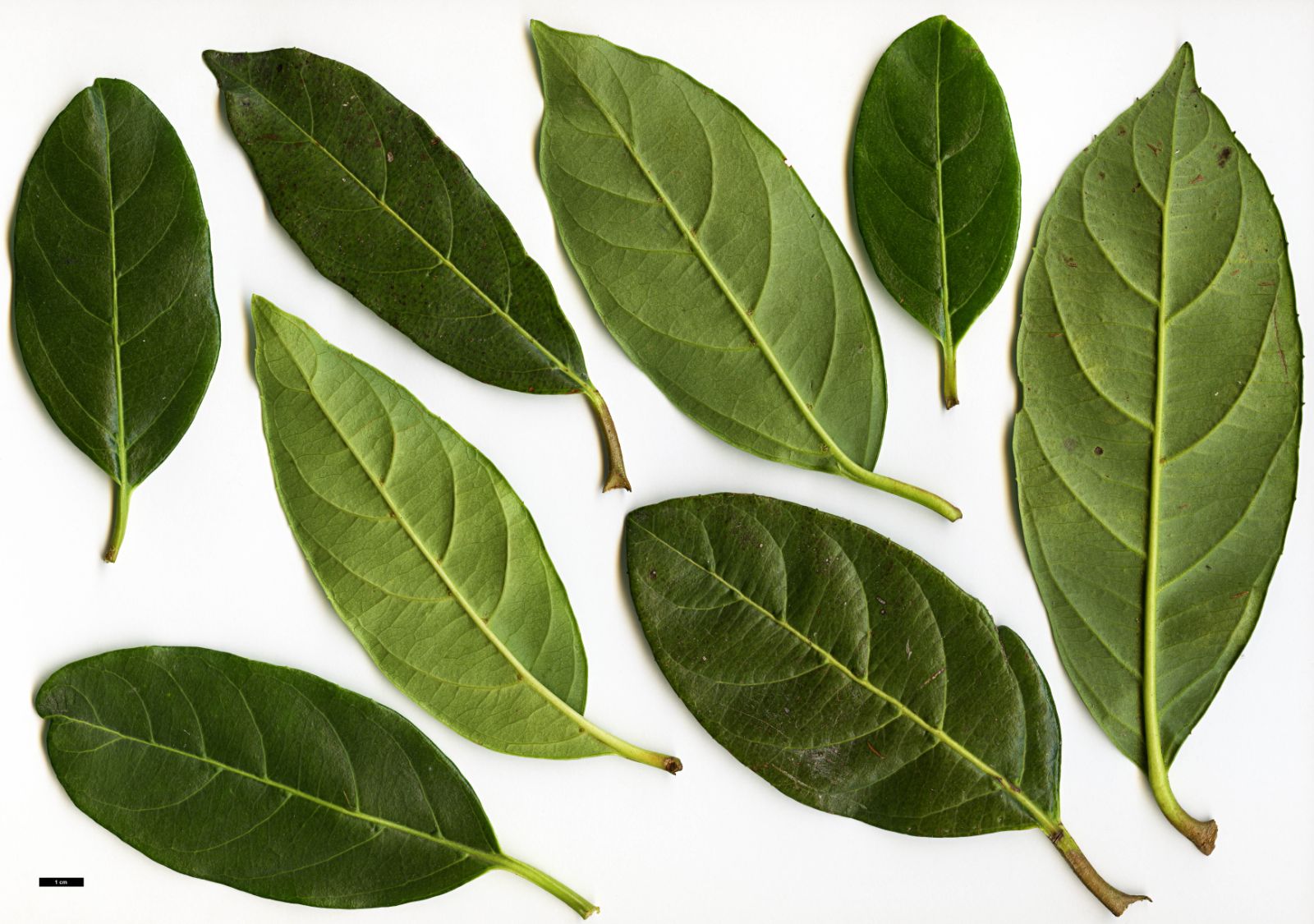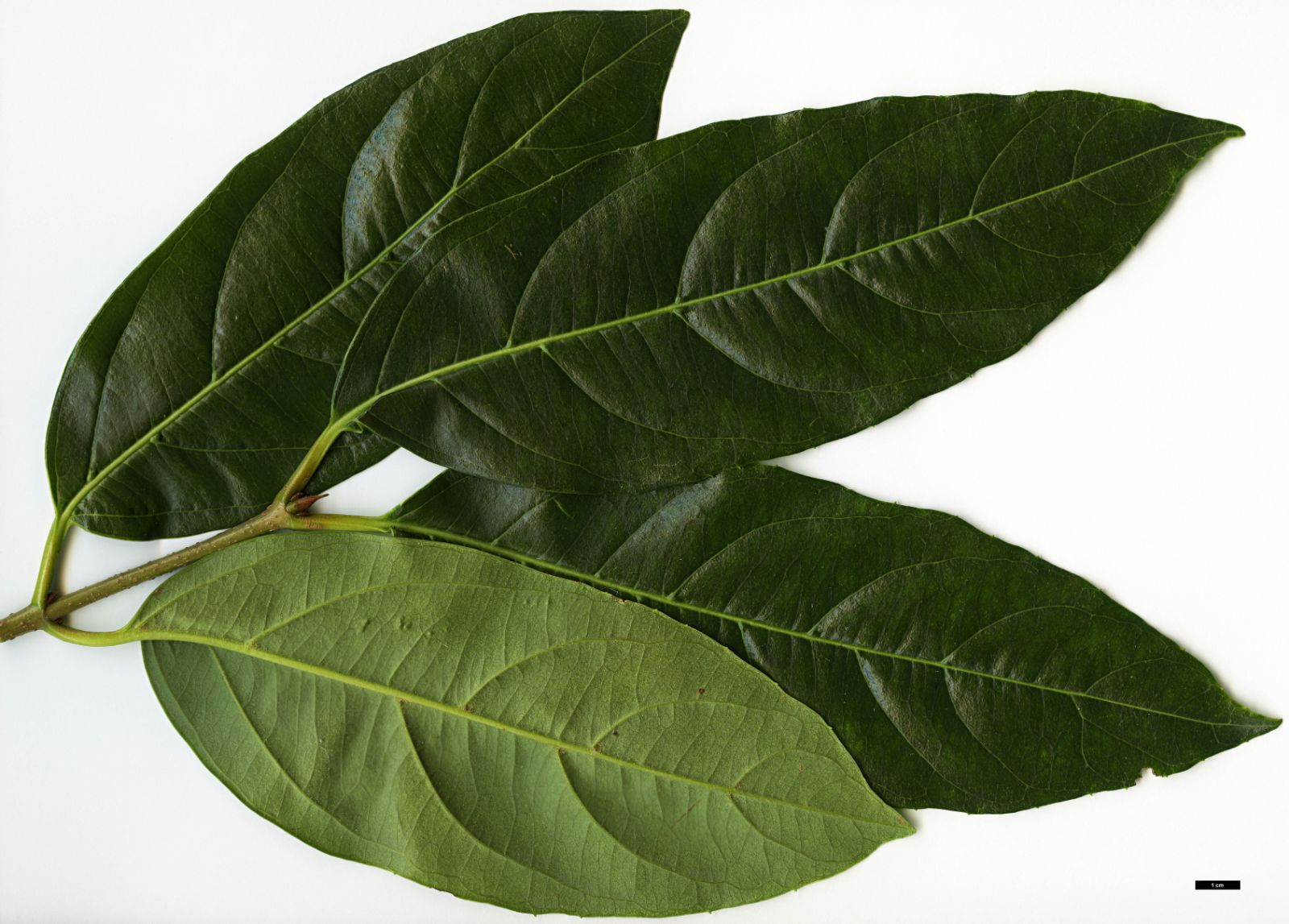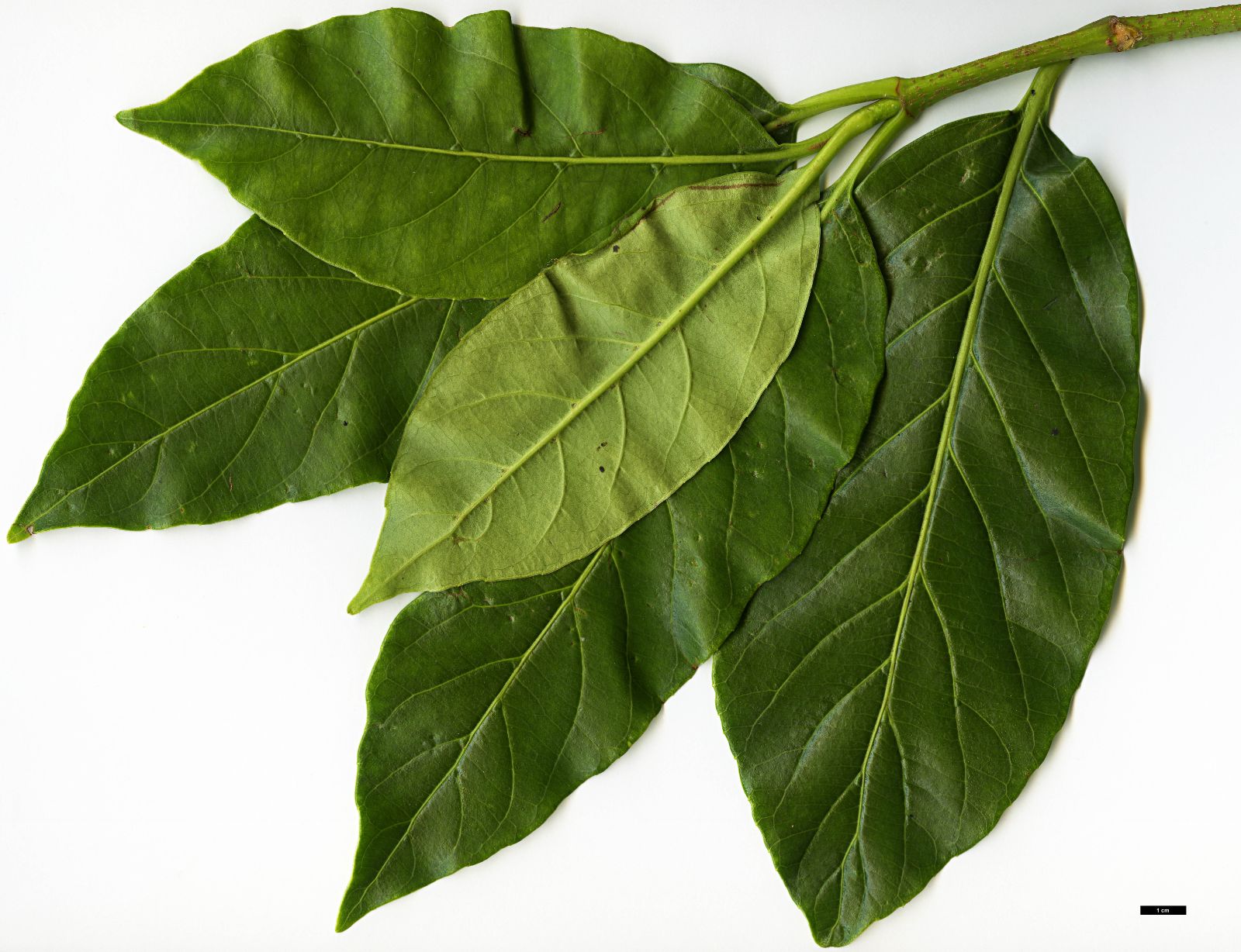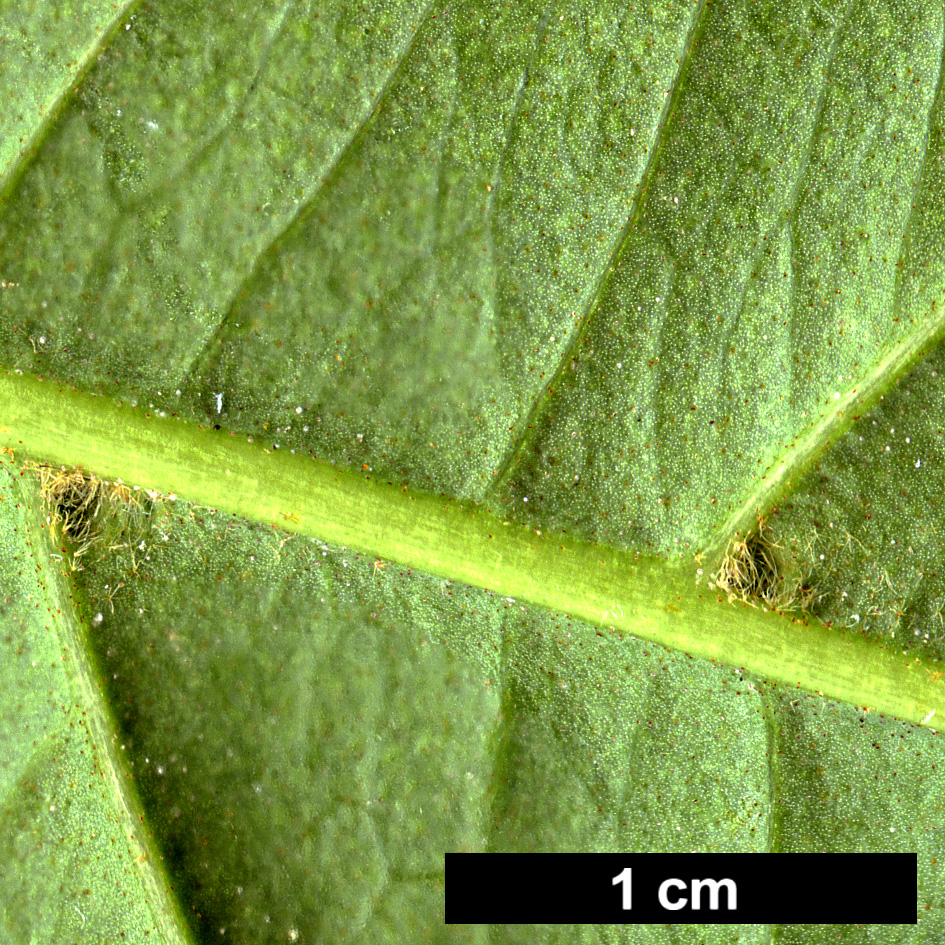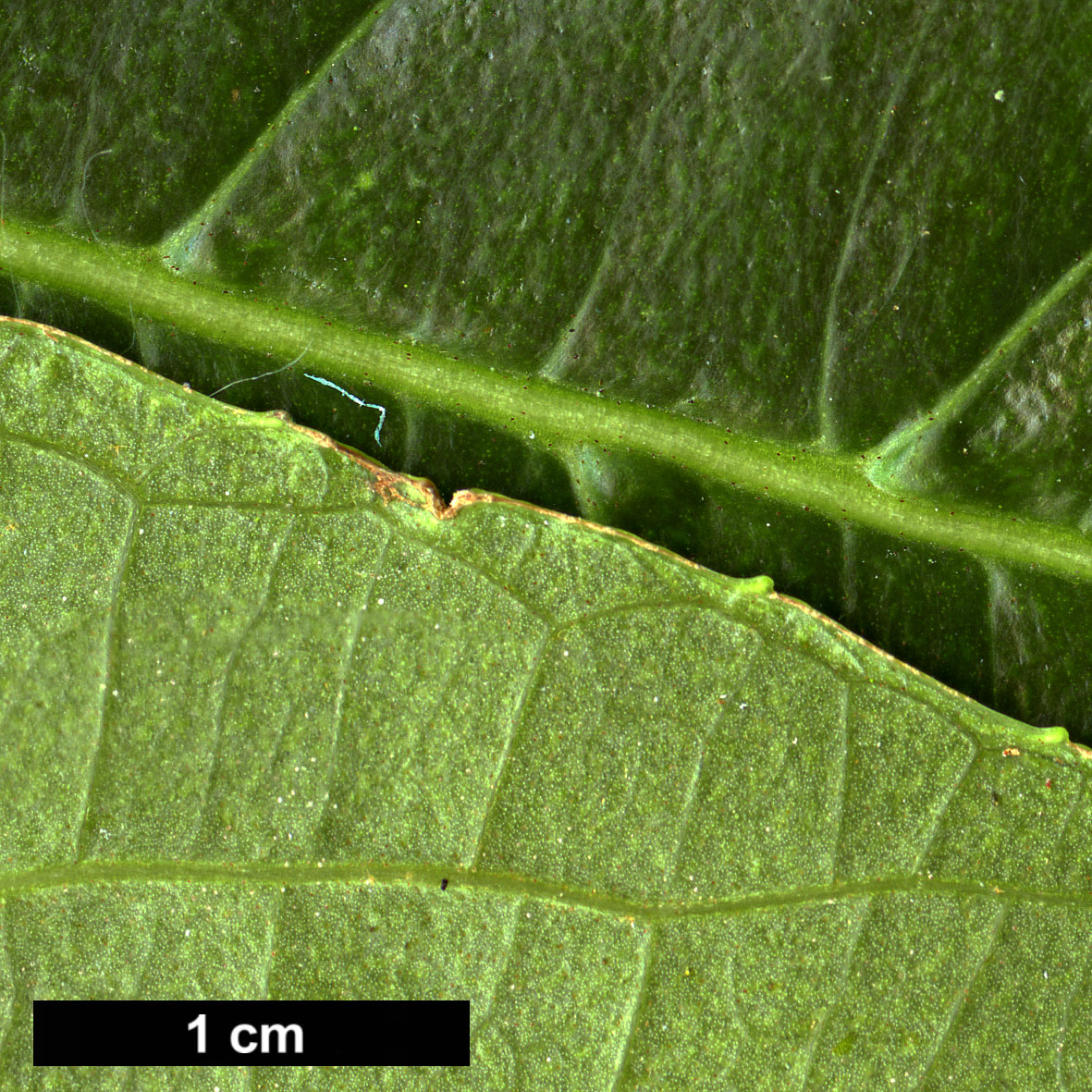Viburnum odoratissimum
Credits
Article from Bean's Trees and Shrubs Hardy in the British Isles
Recommended citation
'Viburnum odoratissimum' from the website Trees and Shrubs Online (treesandshrubsonline.
Genus
Synonyms
- V. awabuki K. Koch
- V. awafuki Hort.
Other taxa in genus
- Viburnum acerifolium
- Viburnum betulifolium
- Viburnum × bodnantense
- Viburnum buddleifolium
- Viburnum burejaeticum
- Viburnum × burkwoodii
- Viburnum × carlcephalum
- Viburnum carlesii
- Viburnum cassinoides
- Viburnum cotinifolium
- Viburnum cylindricum
- Viburnum davidii
- Viburnum dentatum
- Viburnum dilatatum
- Viburnum erosum
- Viburnum farreri
- Viburnum foetidum
- Viburnum grandiflorum
- Viburnum harryanum
- Viburnum henryi
- Viburnum hupehense
- Viburnum japonicum
- Viburnum kansuense
- Viburnum lantana
- Viburnum lantanoides
- Viburnum lentago
- Viburnum macrocephalum
- Viburnum molle
- Viburnum nudum
- Viburnum opulus
- Viburnum phlebotrichum
- Viburnum plicatum
- Viburnum propinquum
- Viburnum prunifolium
- Viburnum rhytidophyllum
- Viburnum rigidum
- Viburnum rufidulum
- Viburnum schensianum
- Viburnum setigerum
- Viburnum sieboldii
- Viburnum suspensum
- Viburnum tinus
- Viburnum utile
- Viburnum veitchii
- Viburnum wilsonii
- Viburnum wrightii
An evergreen shrub, 10 to 25 ft high, with warted bark, free from down. Leaves leathery, oval to obovate, 3 to 8 in. long, 11⁄2 to 4 in. wide, wedge-shaped at the base, rounded or with a short, blunt tip at the apex, entire or with a few obscure teeth towards the end, glossy green and glabrous above, paler beneath and glabrous except for tufts of down in the vein-axils; stalk 1⁄2 to 11⁄4 in. long. Flowers pure white, fragrant, all perfect, produced in stalked, broadly pyramidal panicles, 3 to 6 in. high, 21⁄2 to 5 in. wide at the base. Fruits red at first, ultimately black.
Native of northeastern India, southeast continental Asia, Japan, Formosa, the Philippines and the Celebes; introduced about 1818. This shrub grows well and makes a handsome bush in the southwestern counties, but is not very hardy near London – not so hardy even as V. japonicum, with which it was much confused. Its pyramidal inflorescence best distinguishes it from that species, but the venation of the leaf also is different in the veins splitting up and not running out to the margin, a character which enables it to be recognised when out of bloom.
The Japanese race of V. odoratissimum is sometimes separated as a distinct species – V. awabuki – though Rehder considered that it did not even merit varietal status. In V. odoratissimum sens. strict. the corolla-lobes are large, and longer than the tube; in the Japanese plants the corolla-tube is longer, and the lobes relatively shorter.

